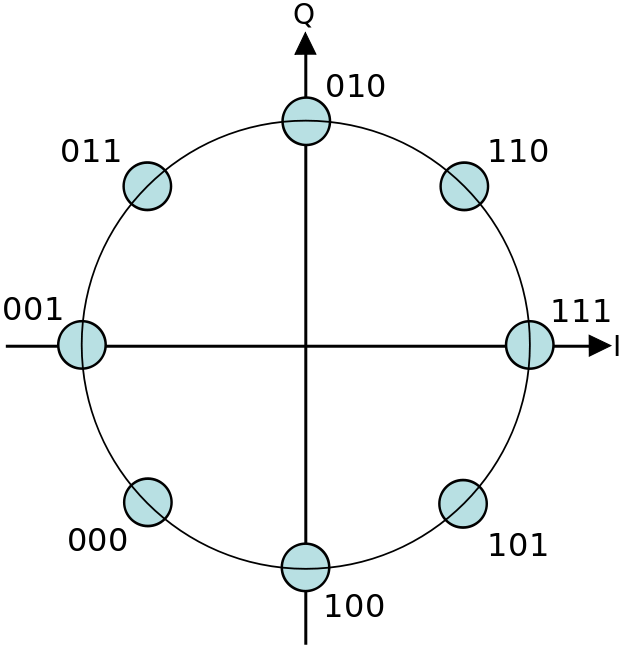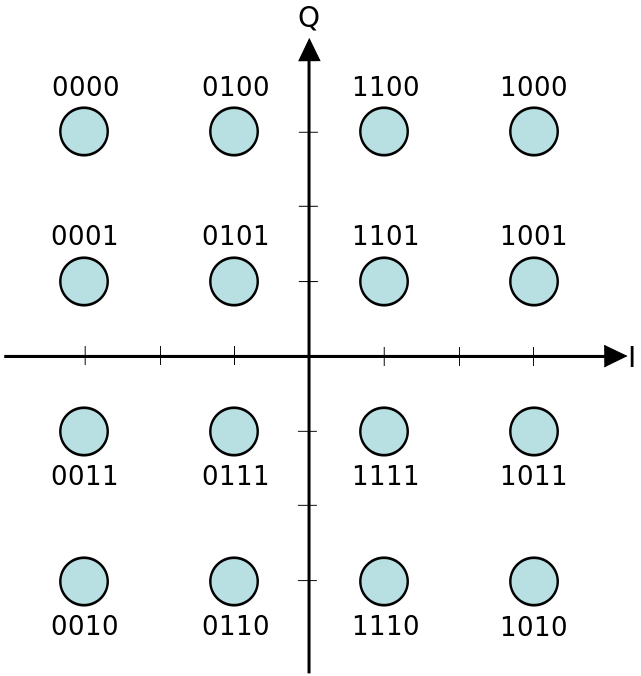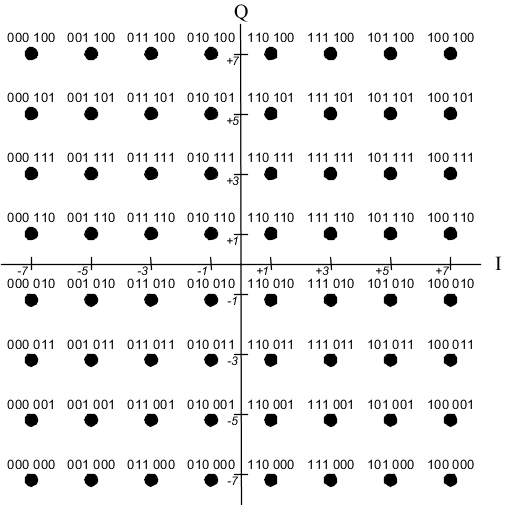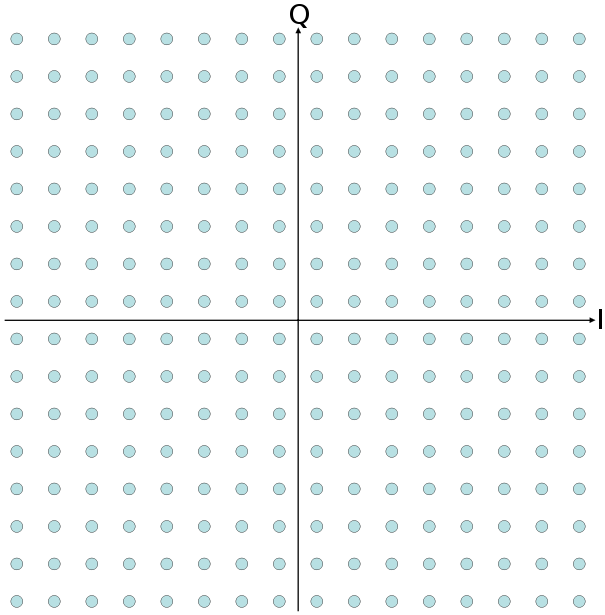Illustration of the different types of Phase-Shift Keying Modulation (PSK) and Quadrature Amplitude Modulation (QAM) schemes.
PSK Modulation Schemes
The distinct states of the output signal are achieved by varying the phase of the carrier signal.
Binary PSK (BPSK)
- Other names:
- 2-PSK
- 2 distinct phases $\rightarrow$ 2 symbols $\rightarrow$ 1
bit/symbol
.png)
Quadrature PSK (QPSK)
- Other names:
- 4-PSK
- 4-QAM
- 4 distinct phases $\rightarrow$ 4 symbols $\rightarrow$ 2
bits/symbol
.png)
- 4-PSK and 4-QAM are based on different concepts, however, they result in the same modulated signal.
- Used in LTE
8-PSK
- 8 distinct phases $\rightarrow$ 8 symbols $\rightarrow$ 3
bits/symbol

- Highest-order PSK modulation scheme that is used in practice. In e.g. 16-PSK, with 16 distinct phases, the error rate would be too high. If a higher bits/symbol rate is needed, then another modulation scheme (such as QAM) is used.
QAM Modulation Schemes
Combination of phase-shift keying (PSK) and amplitude-shift keying (ASK). The distinct states of the ouptut signal are achieved by the combinations of a number of distinct phases and a number of distinct amplitudes.
4-QAM
- 4 phases $\times$ 1 amplitude $\rightarrow$ 4 symbols
$\rightarrow$ 2 bits/symbol
.png)
- In effect, identical to QPSK
16-QAM
- E.g.: 8 phases $\times$ 2 amplitudes $\rightarrow$ 16 symbols
$\rightarrow$ 4 bits/symbol

- Other combinations of phases and amplitudes are possible. There must be at least 16 combinations to accommodate the 16 symbols.
- Used in LTE
64-QAM
- E.g.: 16 phases $\times$ 4 amplitudes $\rightarrow$ 64 symbols
$\rightarrow$ 6 bits/symbol

- Other combinations of phases and amplitudes are possible. There must be at least 64 combinations to accommodate the 64 symbols.
- Used in LTE
256-QAM
- E.g.: 32 phases $\times$ 8 amplitudes $\rightarrow$ 256 symbols
$\rightarrow$ 8 bits/symbol

- Other combinations of phases and amplitudes are possible. There must be at least 256 combinations to accommodate the 256 symbols.